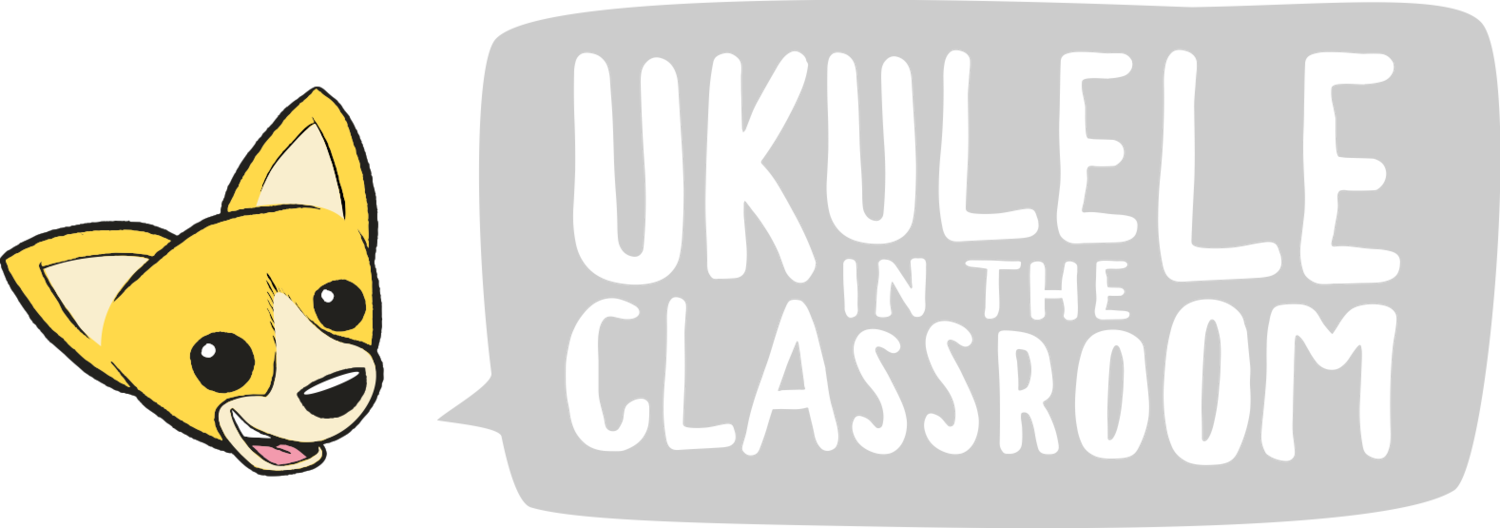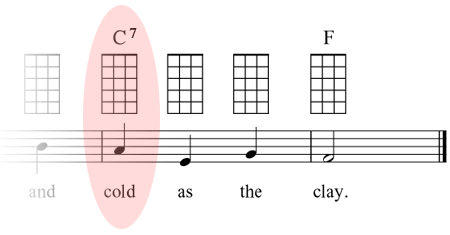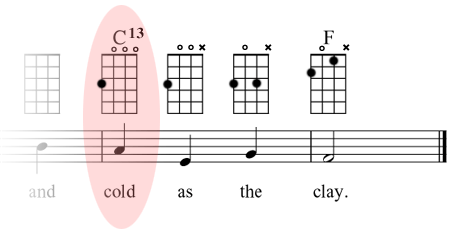Chord 3000
By James Hill
"Chord 3000" is an easy-to-play voicing that can help you out of a sticky situation when creating a chord-melody arrangement.
Thank You, Ohta-san
This article is in C6 tuning (g, c, e, a).
Click here to read in D6 tuning (a, d, f#, b).
"Chord 3000" is one of many things I've learned from watching the great Ohta-san. I first saw him use the chord years ago on a VHS lesson I was watching at a friend's house. It caught my eye (and ear) right away. These days I use it without even thinking. Let me show you how to play "Chord 3000" and demonstrate its usefulness.
Why "3000"?
"Chord 3000" is so named because it's played by pressing one finger on the third fret of the fourth string. All the other strings are open, hence the numeric code 3-0-0-0:
The Inner Workings
Warning: technical jargon ahead. If you're not interested in the inner workings of this chord, skip to the next section! Go on... save yourself!!
Still here? Ok, you asked for it. Technically speaking, this is a C13 chord (just in case you were wondering); it contains four notes: C (the root), E (the third), B-flat (the seventh) and A (the thirteenth). You might have noticed that the "thirteenth" of a chord is the same note as the "sixth" of the chord (try it for yourself: count six steps up the musical alphabet starting with the note C like this: C, D, E, F, G, A. Count thirteen steps and you'll arrive at the same note).
So why not call this chord C6? Because a C6 chord has no 7th. That's the big difference (the only difference, in fact) between C6 and C13. In other words, C13 is a dominant chord. C6 is not. The rule is this: when we use a number higher than 7 we're signaling that the 7th of the chord is also present.
Getting to the Point...
The most important thing is that "Chord 3000" can save your bacon when you're creating a chord-solo arrangement. Let me show you how.
In one of the monthly assignments in the JHUI Level 1 Teacher Certification Program, students are asked to create a chord-solo arrangement of the cowboy ballad Streets of Laredo. By this time they've already had practise playing chord-melody arrangements but this is the first time they're required to create one of their own. Everything is pretty straight-forward until the second-to-last measure:
On the word "cold" they must play a C7 chord but maintain the melody note A on the first string. How can we play the notes A and B-flat at the same time? You guessed it: chord 3000 (a.k.a. C13) to the rescue! Here's how it works:
The beauty of the C13 chord three-fold:
it preserves all the important notes of the C7 chord
it highlights the note A
it's easy to play (it's just the mirror-image of a C chord!).
The alternative is to leave out the 7th (the note B-flat) and just play a C6. Compare the two options; I think you'll find the C13 chord creates a more full, rich sound. Note that while this chord voicing can be played on any ukulele, it works best on an instrument tuned with a low 4th string.
One More Trick in the Bag
Even if Chord 3000 (a.k.a. C13) doesn't shake your ukulele world to the core, it's a very handy - and beautiful-sounding - thing to know. What's more, if you start to explore the world of jazz ukulele you'll find it an essential tool in your bag of musical tricks!
James Hill is editor of Ukulele Yes!, co-author of Ukulele in the Classroomand director of the annual Langley Ukulele Workshop. He also maintains a busy touring schedule as a performer; his upcoming CD, set for release in September 2011, is called Man With a Love Song. Visit www.ukulelejames.com for more.







This month, Cynthia Kinnunen gives us some intervalactic tactics
Building recognition of intervals aurally (by ear) and on the page (by sight) helps to improve many aspects of our musical learning, including sight reading, sight singing, harmonizing and more! But knowing where to begin teaching intervals can leave us feeling like we’re on another planet.